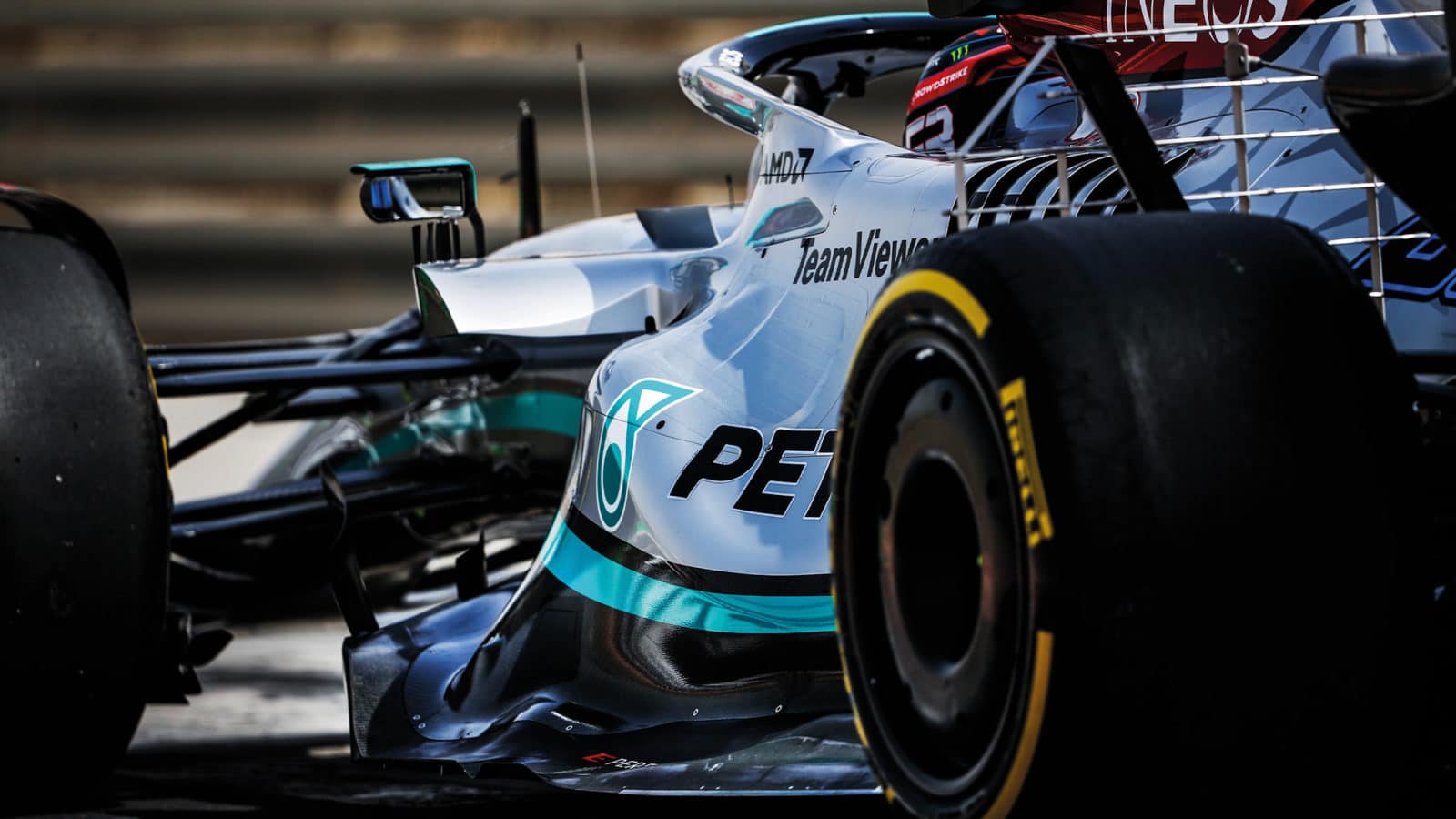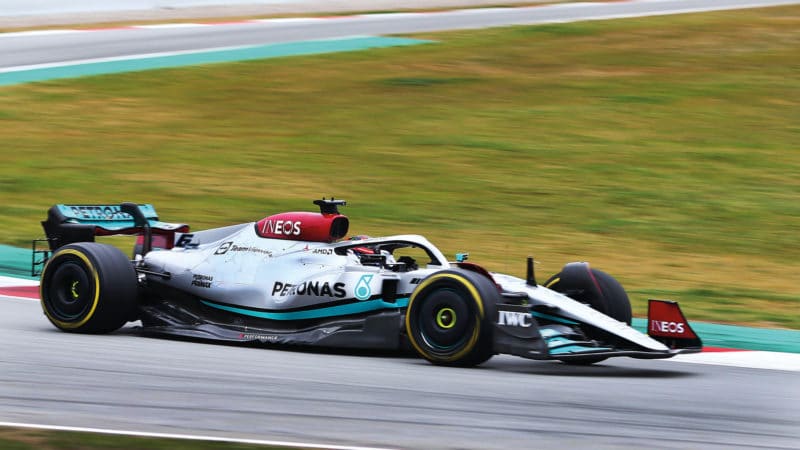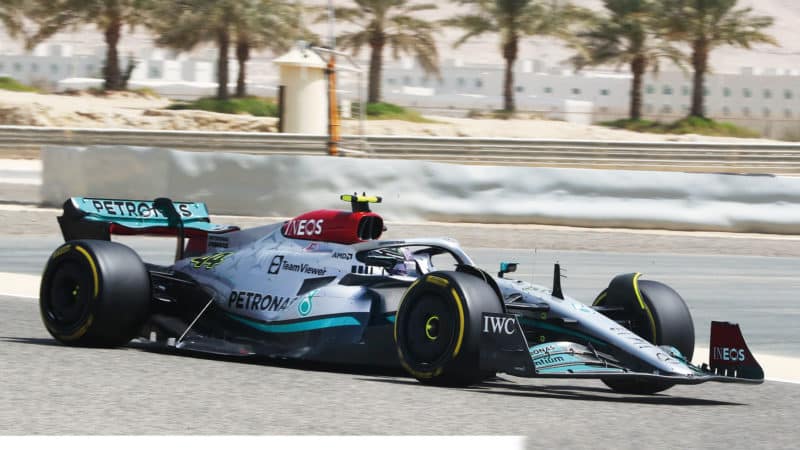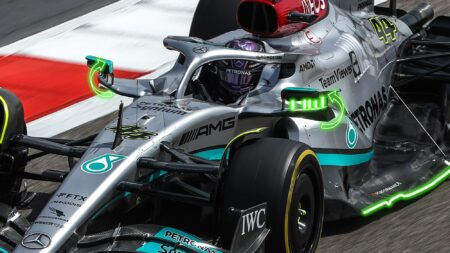The sidepod shape is very much part of determining the split between the air going around the sides and that going through the tunnels. The small size of the radiator inlet opens up more real estate for the airflow to go around the sidepods, feeding the wide channels in the Merc floor’s outer edge. The remaining flow in that part of the car as it travels from between the front wheels to the floor can be fed to the venturi tunnels where it can be accelerated harder by the enhanced energy of the airflow travelling down the sides.
That outer floor airflow has been energised not only by the new sidepod corner shape but also by the air redirected from above by the impact structure ‘wing’.
The gains made from changing the flow in this way have evidently overcome the loss of the undercut to speed up the flow there. But how has it been possible to make the sidepods so narrow as to create this wide outer floor channel and expose the side impact beam? It implies a smaller radiator area needing to be cooled – or more efficient cooling. A significant part of that is almost certainly the new capillary radiator technology being used for the water/air intercooler used by Mercedes. This has been developed with Reaction Engines, which supplies cooling systems for rocket-powered spacecraft. Capillary motion concerns how liquid in a tube can be induced to move against gravity and this phenomenon is believed to be incorporated in a pre-cooler within the intercooler which allows the whole component to be shrunk in size.
Intercoolers are not considered part of the power unit within the regulations and even customer engine teams tend to source or make their own. So the intercooler on the W13 is almost certainly not shared with the Mercedes customer teams.





